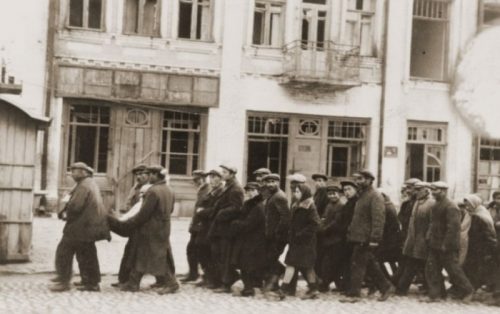Nash Holos: Kamianets-Podilsk

Kamianets was an ancient and important centre of Jewish life. Now called Kamianets-Podilskyi, today it is a city in western Ukraine, north-east of Chernivtsi.
The first part of the city’s dual name originates from камiнь, meaning “stone.” The second part relates to Podillia, of which it is considered to be the historic capital.
Podillia is a historic region in Eastern Europe, located in the southern and western areas of modern day Ukraine, and northeastern Moldova. According to archeological evidence, it was inhabited as far back as the Neolithic period.
The earliest mention of Kamianets appeared in an 11th century chronicle, as a town of the Kievan Rus’ state. In the 13th century the Mongols destroyed Kamianets. A century later it was annexed by Polish King Casimir III, and remained mostly under Polish rule until the Soviet era.
The rest of Podillia was carved up over the centuries by surrounding empires — Hapsburg, Ottoman, Russian.
Kamianets was a bustling trade centre, in which at times Jews made up 50 percent of the population. Kamianets is considered the cradle of Hasidic Judaism, and was a centre for the development of Jewish culture and politics.
Jewish inhabitants were first noted in 1447. In 1598, the Polish King banned Jews from engaging in trade in Kamianets, and banished Jewish residents to outlying villages.
Over the next centuries, the Jewish community of Kamianets endured an uneasy relationship with authorities and locals alike. During the latter half of the 19th century, many Jews emigrated from Kamianets to the United States, especially New York.
1917 ushered in a brief and chaotic era of Ukrainian independence. During this time, the Jews of Kamianets endured several pogroms. In 1919, a Jewish delegation appealed to President Simon Petlyura to take firm measures against pogroms. Petlyura agreed, and also called for closer cooperation between Ukrainians and Jews for the good of the Ukrainian State and their mutual interests.
A year later, Kamianets fell to the Soviets. Soon they closed down the synagogues, confiscated all religious items, and repressed religious expression.
Then came World War II. The Nazis’ carried out the first act of the “Final Solution” near Kamianets-Podilskyi. On August 27th and 28th 1941, at a munitions depot on the outskirts of the city, they machine gunned nearly 24 thousand Jews. It is estimated that the Nazis murdered over 40,000 Jews in Kamianets-Podilskyi, nearly wiping out the entire population.
Today, only remnants of the Jewish presence remain. The restored façades of the Great Tailors Synagogue (Реміснича синагога). The Honchar (or Potter’s) Tower. Houses and shops in which Jewish families lived and worked. The Big Artisan Synagogue – the only synagogue of six that once proudly stood in the city’s Jewish religious center. The abandoned Old Jewish Cemetery. The new Jewish cemetery, where many Jews were murdered by the Nazis. Monuments marking mass graves, including the one at the munitions depot.
Today, the Jewish community of Kamianets-Podilskyi numbers about 500.
Little is known of the historical significance of Kamianets-Podilskyi, especially with regard to Eastern European Jewry. During the Soviet era, the city was under strict military control, and research was severely restricted. After Ukraine gained independence, a wealth of archival material was available to researchers, until a fire in 2003 destroyed most of it. A foundation has been established to preserve what remains.
This is Renata Hanynets, at the Faina Petryakova Scientific Centre in Lviv, Ukraine.
Until next time, Shalom.
Listen to the program here.
Ukrainian Jewish Heritage is brought to you by the Ukrainian Jewish Encounter (UJE), a privately funded multinational organization whose goal is to promote mutual understanding between Ukrainians and Jews. Transcripts and audio files of this and earlier broadcasts of Ukrainian Jewish Heritage are available at the UJE website and the Nash Holos website.



















